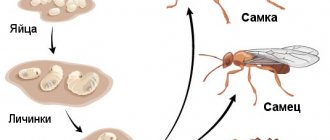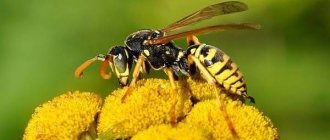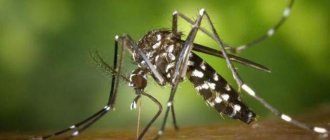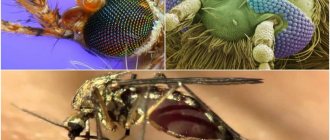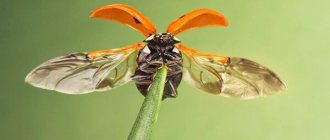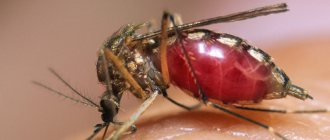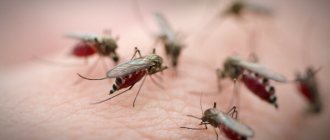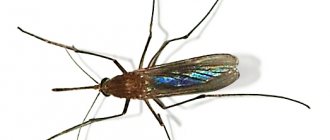Midges
Summer is the time for preparations, so in every kitchen you can see an abundance of fruits, berries and vegetables. It is then that seemingly harmless small fruit midges appear literally out of nowhere. It gets into dishes and drinks on the table, it can fly into the nose, mouth or eyes, causing discomfort and causing a feeling of disgust. Considering how long midges live and how quickly they reproduce, you can soon see a whole horde of pests in the house.
Basic information about the insect
The fruit fly is the most common insect in our climate zone. Its size is a maximum of three and a half millimeters in length and 0.5 millimeters in width. Creatures live around fruits and vegetables that have spoiled or are simply in uncovered containers. The midge's body is brown in color and has small black wings on its back.
A female insect lays 200 to 500 eggs throughout her life. How long do midges live? On average fifteen to twenty-five days. This indicator depends on climatic conditions and nutrition. In apartment conditions, the larvae turn into young individuals after 27 hours. On average, they take four to six days to mature.
The small larvae of these midges also feed on rotting fruits. They are attracted by the smell of wine and grapes. Each of us constantly sees these insects in the summer; they are everywhere: on the streets, in our apartments, shops. That is why the problem of getting rid of them becomes urgent. This is quite difficult to do, but in the article we will still look at several ways.
Their attack on our products continues as long as mosquitoes and midges live. Throughout their short lives, they feed on rot and other waste so that they can lay eggs and give birth to offspring.
House flies
Pet feeding containers should be washed immediately.
The remaining food begins to rot, causing midges to appear. The food supply for small annoying insects that live in houses and apartments may be different, although they themselves are similar in appearance. Midges in an apartment look like a smaller copy of a fly or a very small mosquito with wings; they also belong to the class of insects (insecta), the order Diptera. The body length is 2–10 mm, there are three pairs of legs and one pair of wings.
Fruit fly (Drosophila melanogaster) is a species of the fruit fly family. Other names: fruit or wine midge, fruit fly. The body length is 2–4 mm. The color is red-yellowish, brown.
Butterflies are small flies whose body length reaches 1–4 mm. Externally they look like very small night moths. The body is covered with light brown fluff, and a pair of wings are covered with gray fibers. Other names for these insects are sewer flies or drain midges.
Drosophila feed on plant debris and fruit juice, so they are more often found in the kitchen, where they swarm over food waste. Sewer midges fly near the sink and drain hole in the bathroom. Sciarides usually climb around indoor plants, sit on flower pots, window sills, and window frames.
On balcony and indoor flowers you can find leafhoppers - representatives of the order Coleoptera, family Cicadellidae. These are larger insects than fruit flies and fungus gnats. The body length in the shape of the Latin letter V reaches 1 cm. The color is light gray, yellow, greenish. Adult leafhoppers can fly around the room, and at one stage of development they do not have wings and jump high near food plants.
The described species of house midges do not include true mosquitoes and flies; they are much larger. Screens on windows usually trap these insects, but are often useless against the smallest representatives of dipterans.
Drosophila are attracted to living quarters by fresh, ripening and already rotting fruits, fruit peels, various cores, and leftovers containing sugar. Wine midges quickly master open bags and bottles after drinking juices and other sweet drinks.
Female fruit flies lay eggs on top or inside fruits. Within 1 day, the larvae hatch, for which the sweet fruit is both a table and a home. They feed for 9–10 days and begin to reproduce.
It is not always clear where midges appear in the bathroom. Butterflies find an abundance of decaying organic matter, moisture and warmth in drain holes. Sewer fly larvae feed on the mucous deposits covering the inside of pipes.
The number of fungus gnats directly depends on the dampness in flower pots and the entire apartment. Sciarides find favorable conditions for themselves in old pots in which soil algae and rotting parts of roots accumulate, as well as in containers with waterlogged substrate.
Often in a flower pot or in a greenhouse you can notice very small insects that flutter above the surface of the ground or cling to the leaves of plants. This is the so-called flower midge. Surprisingly, these insects do not belong to the midge family at all:
- dark gray or black midges, as well as flower midges - usually these are leaf gnats (sciarids, also known as soil gnats or fruit gnats);
- green midges - these can be lacewings or winged species of aphids;
- white midges – most often these are whiteflies (also known as aleurodids);
- fruit flies or fruit flies, house flies or house flies, are fruit flies that can often be seen circling over overripe or rotting vegetables and fruits. They are also representatives of a completely different family.
Photo top left: John Tann, CC BY 2.0. Photo top right: Melissa McMasters, CC BY 2.0
What do fruit midges eat?
Such insects feed on absolutely all types of fruits, or rather, their rotten remains and other naturally processed products. Young individuals prefer to eat fresh fruit juice. It helps them grow faster and produce healthy larvae.
A common question is how long midges live in the summer. During the warm season, the average lifespan of a fruit fly is one month. In nature, due to the lack of fruits in the cold season, the fly can feed on the sap of trees, grass, flowers and leaves.
The insect lives in countries with warm tropical, subtropical or temperate climates. Some species of fruit flies can drink the blood of people or animals to support their life cycle.
How long do midges that feed on blood live? Approximately 20 days. The most common place for them to live is in vineyard plantations, because no one will fight the influx of such insects over vast areas. Plus, midges really love grapes.
Appearance of the larva
The fly has three stages of development: egg, larva, adult insect
In their natural habitat, midges usually settle near open bodies of fresh water. This is where they lay their larvae. To complete this process, some descend under water, while others lay larvae near the water, on the shore. And there are also very extravagant individuals. They drop their eggs into the water as they fly.
Laying eggs is a group process. In this case, entire colonies of larvae are formed in the riverbed (up to 200 per square centimeter). Their food consists of organic compounds dissolved in water and/or small aquatic microorganisms. Food entering the body goes through a filtration process. Therefore, the faster the river flows, the more and faster the digestion process occurs.
Methods for getting rid of fruit gnats
Midges appear in our apartments along with southern fruits; they can live in trash cans or bags of fruit. Midges can appear even if nothing has gone bad at home and there is no fruit. The thing is that eggs can be laid in advance.
Absolutely fresh store-bought products may already contain fruit fly eggs. They are not dangerous to the human body, but it is still quite unpleasant to realize the presence of fly larvae on food.
20 days is the answer to the question of how long midges live on the street. It’s quite easy for them to find something to eat in garbage dumps. However, strong winds and other weather factors significantly shorten their life outdoors.
In order to destroy the maximum number of midges and their larvae, follow these tips:
- Find and destroy their main habitat in your home.
- Place traps in other places where they may accumulate.
- Regularly take preventive measures that will not allow fruit flies to appear indoors in large quantities.
What to do if you find onion midges?
How to get rid of onion midges is a paramount question, and you need to start solving it by finding a place for their active reproduction. The main thing is to leave pests without food and a breeding ground for their offspring. The procedure will be as follows:
- Throw away spoiled onions, carefully sorting through all available vegetables.
- Place the onions in the refrigerator without signs of rotting or spoilage, placing them in small portions in plastic bags.
- If it is not possible to put onions and other root vegetables in the cold, they should be stored in boxes with sawdust, or, as a last resort, in well-ventilated fabric bags.
- Remove all fruits, especially citrus fruits, out of reach of midges.
- Throw out garbage on time, at first - 1-2 times a day.
- Wash dirty dishes immediately after eating.
- Limit the access of insects to water - they also need it for life. To do this, you should close all taps so that they do not drip, leave sinks dry, do not store water on the table, and thoroughly dry clean dishes.
- Remove and clean siphons a couple of times a week and use disinfectants to clean the sewer system.
- Wash your pets' cages regularly and prevent food residues from being left there.
IMPORTANT: If there are plants in the apartment, they also need to be cleaned, because insects can settle on them for lack of other food. You should reduce the frequency of watering and stop pouring tea leaves on the ground. If necessary, you can spray the flowers with a weak solution of potassium permanganate.
Tips to help you quickly get rid of onion midges:
How long do midges live at different times of the year?
Midges live in our microclimate all year round, but depending on the time of year and the temperature outside, there are fewer of them.
17 is the number of days that shows how long fruit midges live in the spring. In summer, their activity increases noticeably and their numbers become a record high for the entire season.
In winter, midges are practically inactive and live only in well-heated rooms that are not exposed to drafts. Even with short-term contact with snow and ice, the midge dies. Cold weather can kill large numbers of these types of insects.
How long do midges live indoors when they have nothing to eat? A few days. Due to lack of food, both adults and larvae die. The eggs may mature, but then no offspring will emerge from them.
Habitat
The larva that emerges from the eggs lives only in running water.
Midge larvae are very sensitive to the amount of oxygen in the water. Therefore, in places with little content, they quickly die. Such places include standing water or an aquatic environment with a large number of rotting microorganisms.
If the environment in which midge larvae live changes, they are able to release cobwebs. How long is it? The length of this web reaches two meters. On it they stay for some time in the fast flow of the river. If the natural balance is restored, the larva returns through the web to its previous place of residence.
The adult emerges from the larva after 10-14 days (process duration: larva-pupa-adult - up to two weeks). Leaving its cocoon, the midge surrounds itself with an air bubble. It is in it that it rises to the surface from the water completely dry.
Live midge under a microscope
Destruction of midge habitats
Most often, fruit flies live in the trash can, rotten produce (apples, strawberries, grapes, strawberries, blackberries, watermelon, melon and other common summer fruits and vegetables), bags of vegetables and fruits, cabinets and flowerpots.
How long do fruit flies live? One fly lives in a warm room for a month, but their numbers can grow exponentially. Find the place where they are most concentrated. Sometimes insects can live in a container that contains some kind of chemical, such as a paint can.
Check the refrigerator. Midges can live in jam jars and jugs of compote. You should try to tightly seal all containers in which foods made from fruits or vegetables are stored.
Usually the larvae turn into full-fledged fruit midges in the early morning, so a lot of them accumulate in the first half of the day. Towards evening, the activity of annoying insects gradually fades away.
Bite process
Midge bite
When bitten, a substance that acts as a painkiller gets into the wound with the saliva of the midge. Therefore, the very moment of biting and absorbing blood remains invisible to humans. The pain occurs only after some time, when it has already flown away.
Redness and swelling occurs at the site of the bite. The wound is very itchy. These phenomena are caused by the fact that midge saliva is poisonous.
If there are a large number of bites, swelling may occur not only on the surface of the wound, but also on the internal organs. In some cases, hemorrhage occurs and symptoms of severe poisoning appear. This situation requires immediate medical attention and emergency assistance.
On the territory of Russia, the largest number of midges is represented in the taiga zone. How many species and who pose a threat to life? The following species pose the greatest danger to humans:
- tundra midge;
- Kholodkovsky midge;
- decorated midge.
How many diseases can this small insect carry? Particularly dangerous are midges that carry diseases such as:
- plague;
- leprosy;
- tularemia;
- anthrax.
During her life, a female fruit midge lays up to four hundred eggs. Typically, the place where pests live is spoiled fruits or vegetables. Females lay eggs there as well. If there are favorable conditions for development, Drosophila larvae emerge from the laid eggs within a day. Feeding on fruit juice and microorganisms, after 5 days the larvae pupate. After another similar time, a young insect appears, which becomes sexually mature the next day.
Midge bite
Consequences of a midge bite
- plague;
- leprosy;
- tularemia;
- glanders;
- anthrax.
Traps
- The most ordinary glass jar. Take a larger jar. Then put in it several pieces of slightly rotten or fresh fruit (it is worth noting that midges will fly to rotten fruits and vegetables faster). You can pour a little compote and put some sweet candies. Place the jar in a visible place or near the insects' habitat. Roll a funnel out of plain white paper. Insert it into the jar. This should be done with the tip down. This way, it will be easy for fruit flies to get into the jar, but they will never get back out. Wait until as many insects as possible are trapped and throw the contents of the jar outside. Never throw everything in the trash. There they will only continue to reproduce. How long do midges live in a trash can? Small colonies can live there for up to four months.
- Take the most common plastic disposable cup. Put some sweet bait there. Even a used fruit aromatic tea bag will do. Cover the cup tightly with cling film. And make small holes in this film so that the midges can crawl through. Wait until a large number of midges (15-30 pieces) bite the bait.
- Plastic bag. Take one garbage bag. Open it up as much as possible and place a few slices of fruit in the middle. Wait for the fruit flies to fly and close the bag quickly. Take it to an outdoor trash container.
Prevention
In order to maintain cleanliness and hygiene in the house, regular prevention should be carried out against long-lived fruit flies. How long do midges live in the kitchen? 35-45 days. Such a long period of residence is explained by a sufficient amount of food and a warm, well-lit room.
Rinse your trash can even if you use bags. Don't put vegetables in cabinets. Take inventory of your refrigerator and pantries regularly.
By following all the simple instructions described in this article, you will forget about such a pest as the small fruit midge.
How to prevent the reappearance of pests?
To prevent insects from settling in your house or apartment again, you need to take measures to repel them. Thus, onion midges cannot tolerate the smell of pine needles and basil. Therefore, you need to purchase essential oils of fir, pine, and basil, soak cotton wool in them and place them in places where vegetables are stored.
Insects do not like the smell of clove seasoning - it can be stuck into citrus fruits that are stored outside the refrigerator. Midges also react negatively to the aromas of ylang-ylang, patchouli, and verbena oils, so they can be dripped into aroma lamps and used regularly. Midges also cannot stand the smell of camphor, which, by the way, is absolutely not harmful to humans. Preventing the appearance of midges is not difficult, but it is effective, and an unpleasant neighborhood will most likely not happen to them.
See also: Methods for successfully combating onion midges
Midges are common insects that look harmless in appearance and appear suddenly in an apartment. They can be seen in indoor flowers or in the kitchen, when there are a lot of vegetables, berries and fruits. Annoying parasites cause a lot of discomfort to humans. They get into your eyes, mouth, and get into food and drinks on the table. Since midges breed quickly, after a few days a whole swarm of creatures appears.
